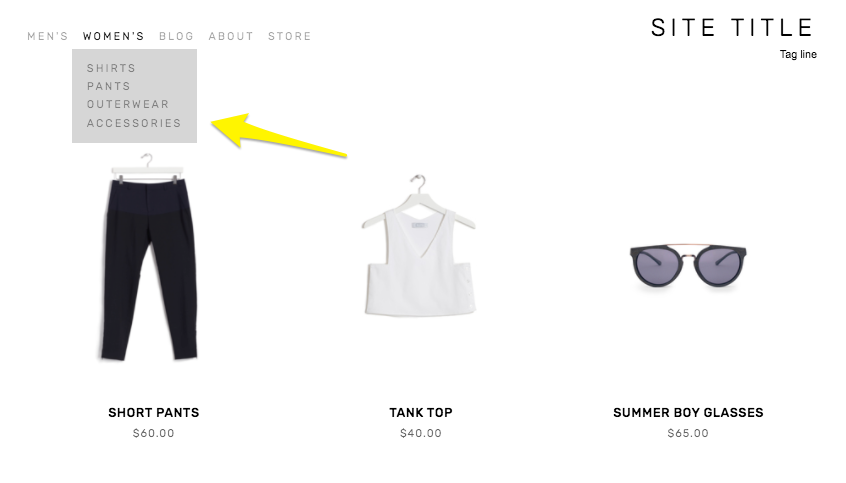

Although there are more advanced trackers out there like SEMRush and SimilarWeb, Google Analytics is still a useful tool to have on your Squarespace website. It tells you your audience’s demographics, how they behave, and which pages of your site are the most appealing to them. With Google Analytics, you can track and analyze the traffic coming into your website. Squarespace has a built-in Google Analytics integration, but you’ll first need to create a Google Analytics account to connect to. These analytics can then be used for optimizing and marketing your website.
#Square space drop down menus tags free
Google Analytics is another free service Google offers that tracks basic site data. When you get an alert like this, you can go to your Squarespace Editor and address the issue.

An example of an alert is that your text is too small to read. If you have elements on your website that aren’t mobile-friendly, Google will send you an alert. Google Search Console also detects mobile usability issues. Squarespace’s templates are all mobile-friendly and responsive, but it doesn’t hurt to check how your site looks on mobile by clicking on the Mobile Preview button in the top right corner of your Editor. Create a Custom 404 Pageīecause more people search the web through mobile devices, Google prioritizes mobile sites over sites built for other platforms. You will find the option to organize your tags and categories under Advanced. Organize them by going back to the main navigation menu and clicking on the gear icon beside the page (e.g., your blog page). From there, you can add tags and categories in the Options tab. Choose your blog, store, or event page from the main navigation and click on the ellipsis beside the post, product, or event you want to categorize. To organize your posts, start by clicking on your Page menu. On a food blog, for example, categories can include “Breakfast Foods,” “Brunch Foods,” “Lunch Foods,” and “Dinner Foods.” The tags for these categories can include “recipe of the day,” “meatless Mondays,” “holiday specials,” “Christmas meals,” and anything else you can think of to describe a specific post. In general, you’ll want to use categories to organize large amounts of content.

Organizing your tags and categories might not directly affect your rankings on Google, but it does improve your user experience. Manage your tags and categories to make your posts and products easier to find


 0 kommentar(er)
0 kommentar(er)
